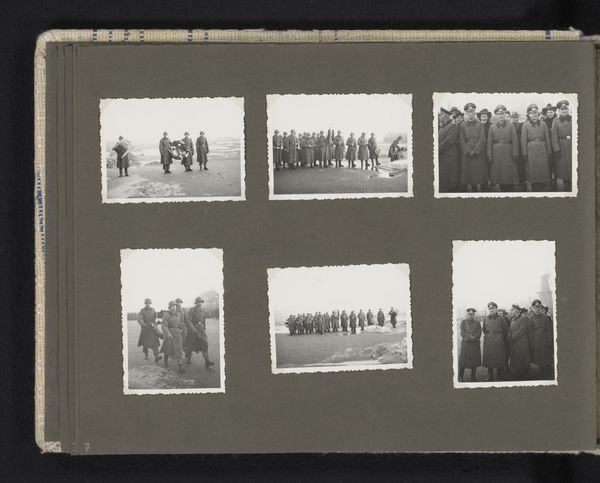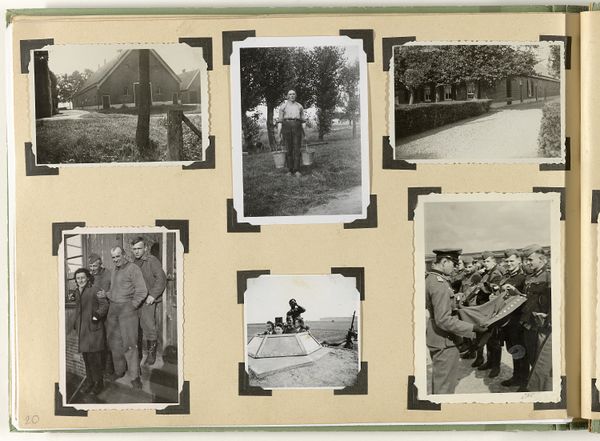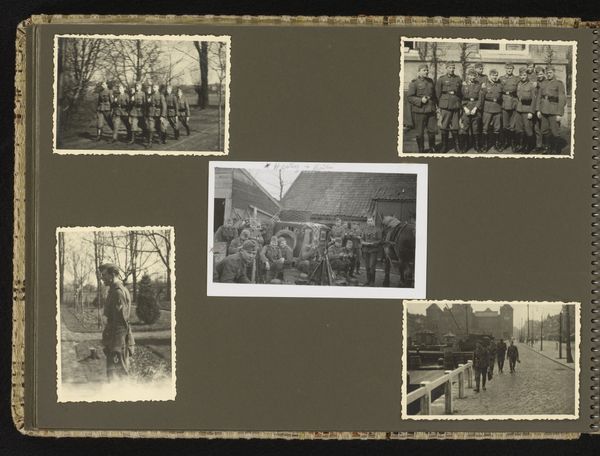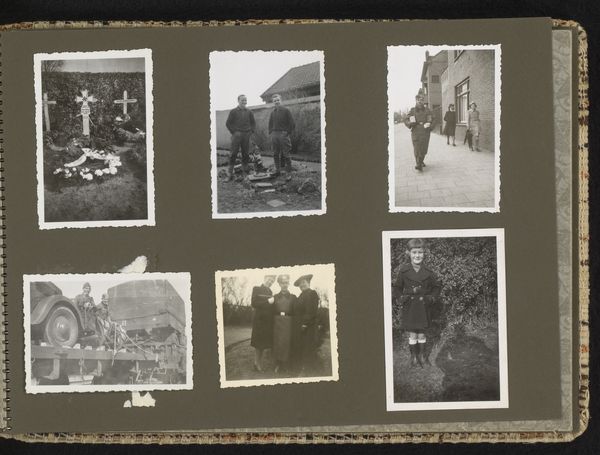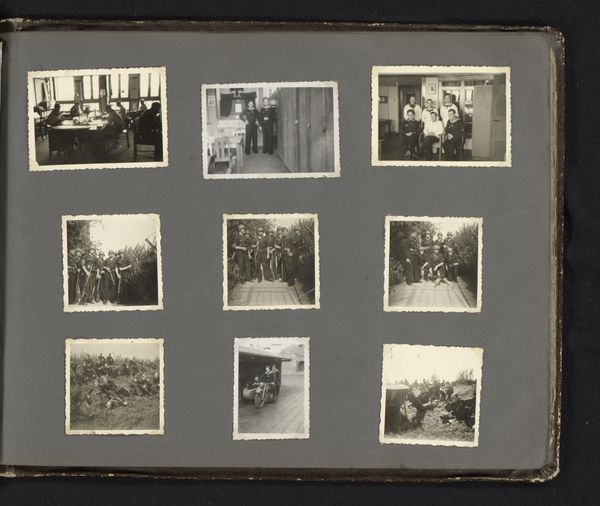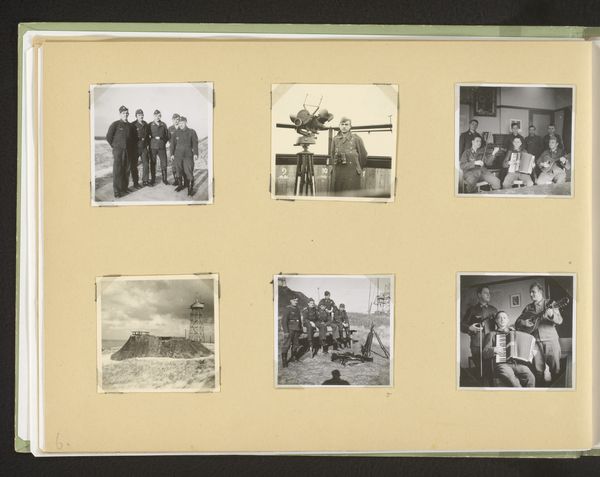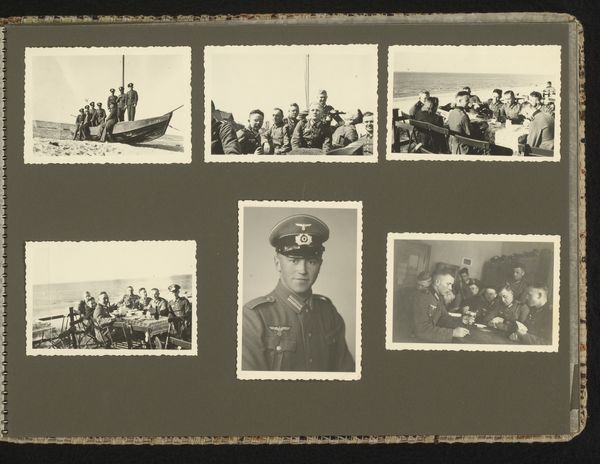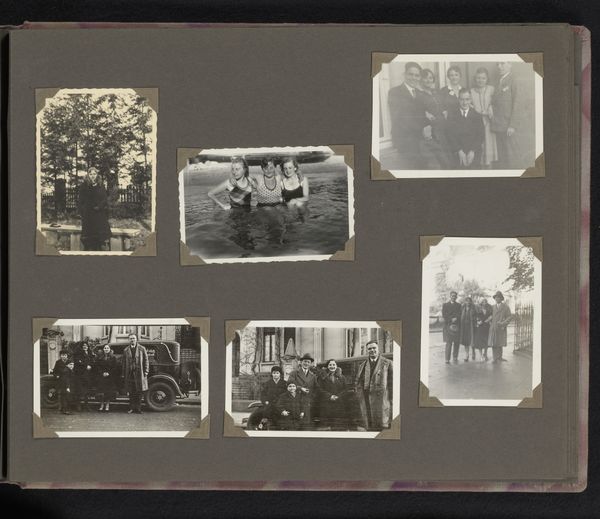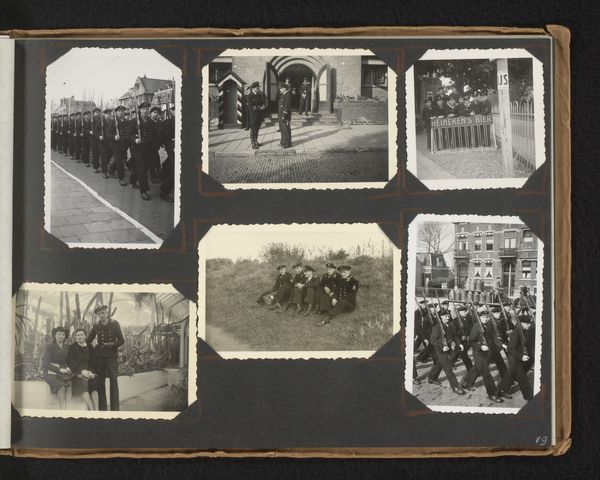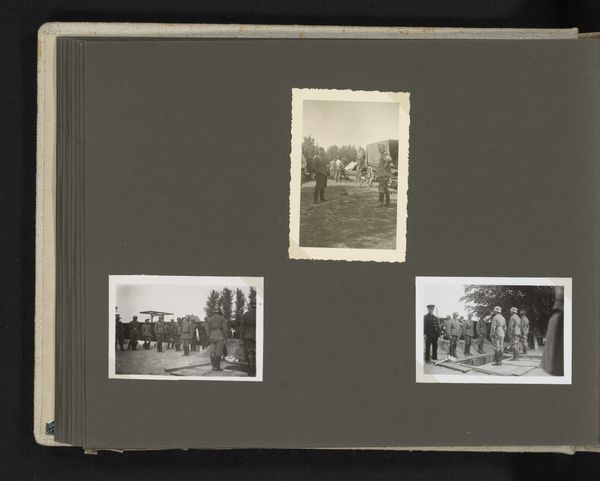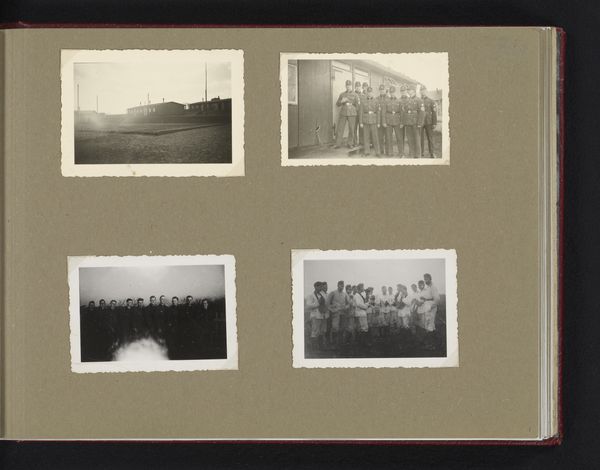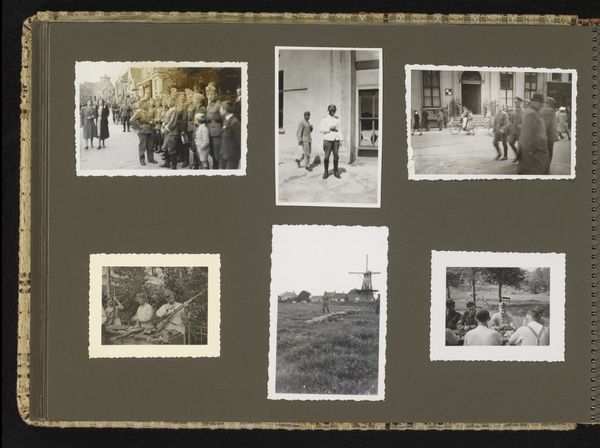
photography, gelatin-silver-print, albumen-print
#
landscape
#
photography
#
group-portraits
#
gelatin-silver-print
#
watercolor
#
albumen-print
#
realism
#
monochrome
Dimensions: height 60 mm, width 90 mm, height 210 mm, width 290 mm
Copyright: Rijks Museum: Open Domain
Curator: This photo album, called "Eten en marcheren" or "Eating and Marching" dates from 1940-1943. Editor: It looks like someone's wartime scrapbook, doesn't it? The monochrome gelatin-silver prints, all nestled neatly in their square frames… it almost feels quaint, until you realize what you’re actually seeing. Curator: Precisely. These photographs document a very specific reality. Looking closer, we see the banality of the everyday intertwined with the machinery of war. Soldiers eating, marching, pausing... Editor: Yeah, that juxtaposition hits you, right? There's this staged quality, but these small moments, catching soldiers in repose – you almost get a glimpse beyond the uniform. It feels like a really weird and really effective portrait of complicity. Curator: It becomes a powerful, albeit incomplete, archive of the occupied Netherlands. We need to be mindful of what this album perhaps leaves unsaid, consider the absent narratives, the experiences of those most vulnerable under Nazi rule. What do you think it means to only present these everyday images in a war zone? Editor: Makes me think of that Joan Didion quote: “We tell ourselves stories in order to live.” Perhaps this album was a way for someone to try and make sense of chaos, find some kind of… normality amidst the occupation? A method of control that they use to process and rationalize their daily existence. I can also feel the impulse behind making a memory. A time capsule during this period, perhaps. Curator: Perhaps this album acts as a case study of power. Even in ordinary settings, actions are never neutral when authority looms, it all relates to this dark and terrible episode in human history. Editor: Absolutely. This small collection asks some seriously big questions. You leave with a feeling of how individuals process larger events. Like you catch the complexity of humanity right there. Curator: Precisely. I think these visual artifacts provide a means of accessing really thorny parts of the past that need rigorous interrogation if we’re to learn anything. Editor: Yes. Memory and record...the artist managed to capture how complex the simplest stories can really be.
Comments
No comments
Be the first to comment and join the conversation on the ultimate creative platform.
